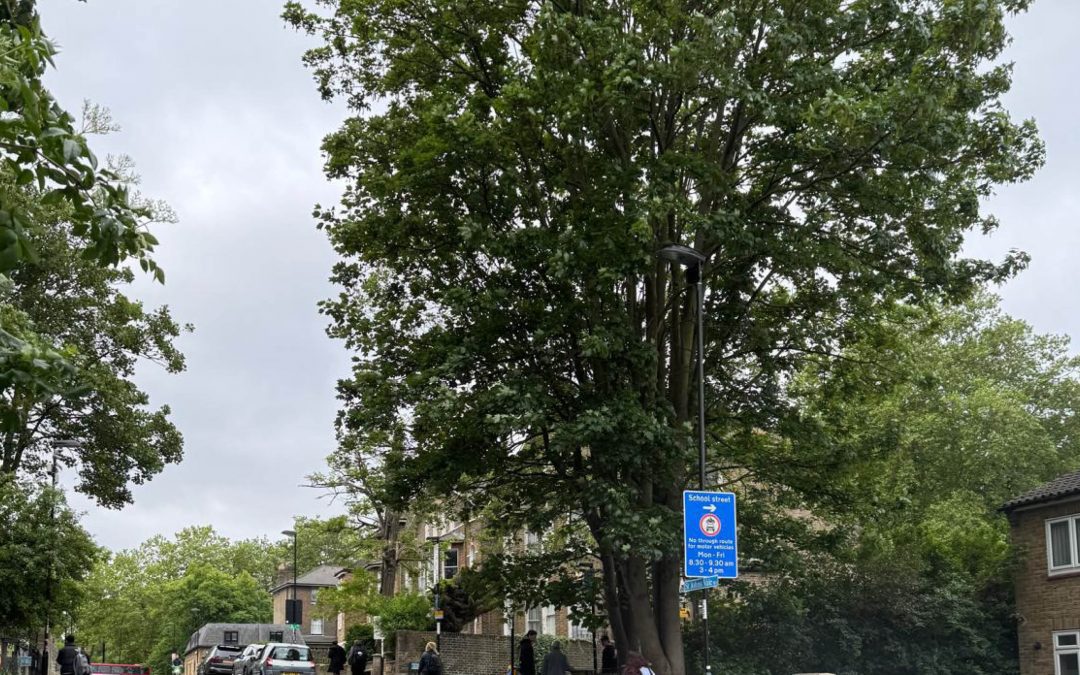Urban trees perform great good. They contribute enormously to biodiversity, clean the air and provide shade, mitigating summer heat to a surprising degree. There is a method for ascertaining the Capital Asset Value of (the) Amenity (of a) tree. Trees have protection either by a specific Tree Preservation Order or by being in a conservation area, when they are deemed to have a TPO. If you fell a protected tree it must be replaced.
Lovely: I live in a conservation area so my local trees are all safe. Not so. My Local Authority feels no obligation to replace trees on their streets even when the impose this on householders. Replacement trees often do not survive.
There are many reasons a tree can die even though in theory they have no set lifespan since they have no ageing mechanism.
I have seen trees in grass verges with scars at strimming height. Recently, one blew over because the trunk was so badly damaged [photo 1]. We know enough to preserve them but laziness or lack of training prevails and the tree loses. Simply forgetting to remove ties is also potentially fatal [photo 2]
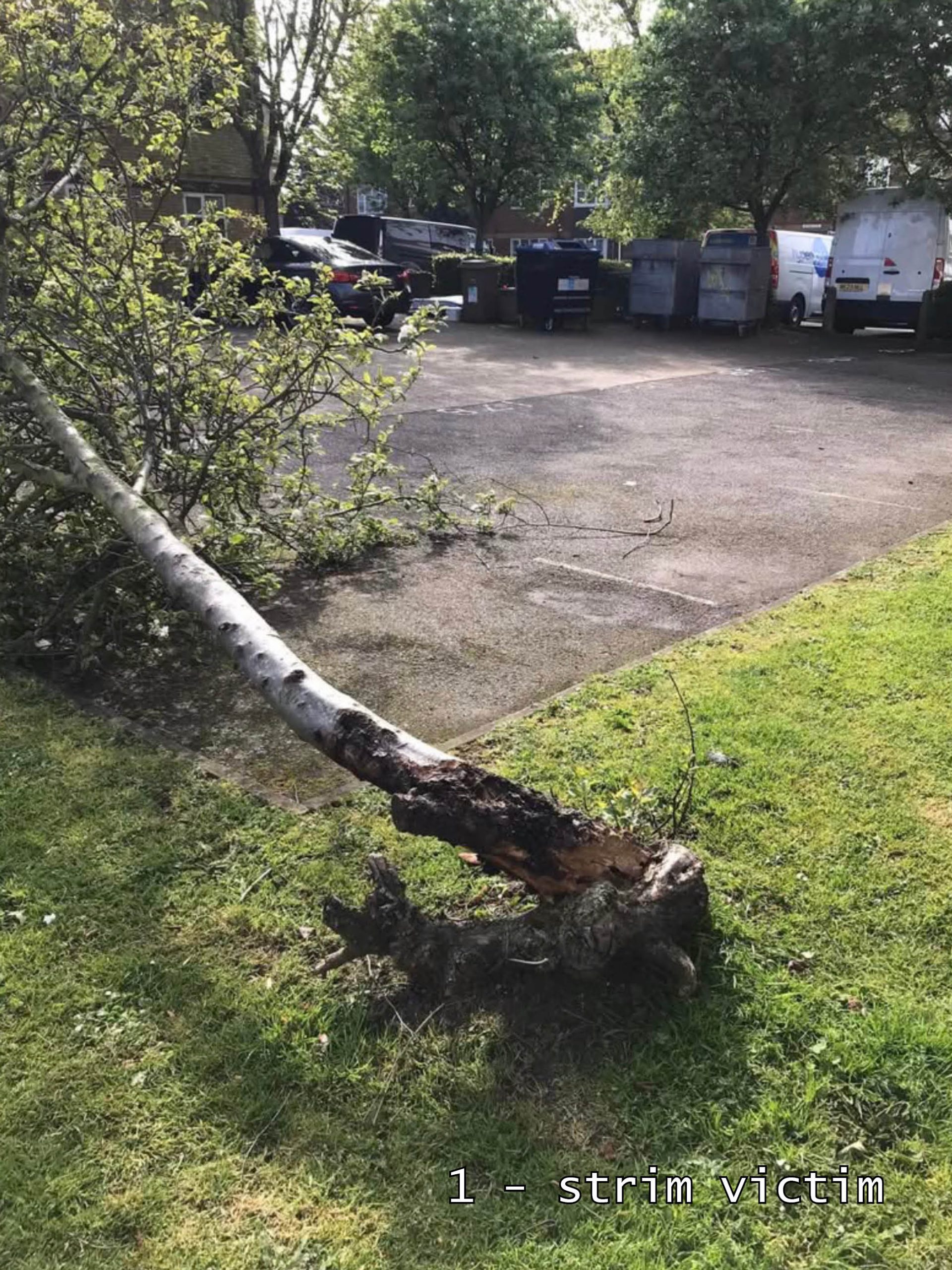
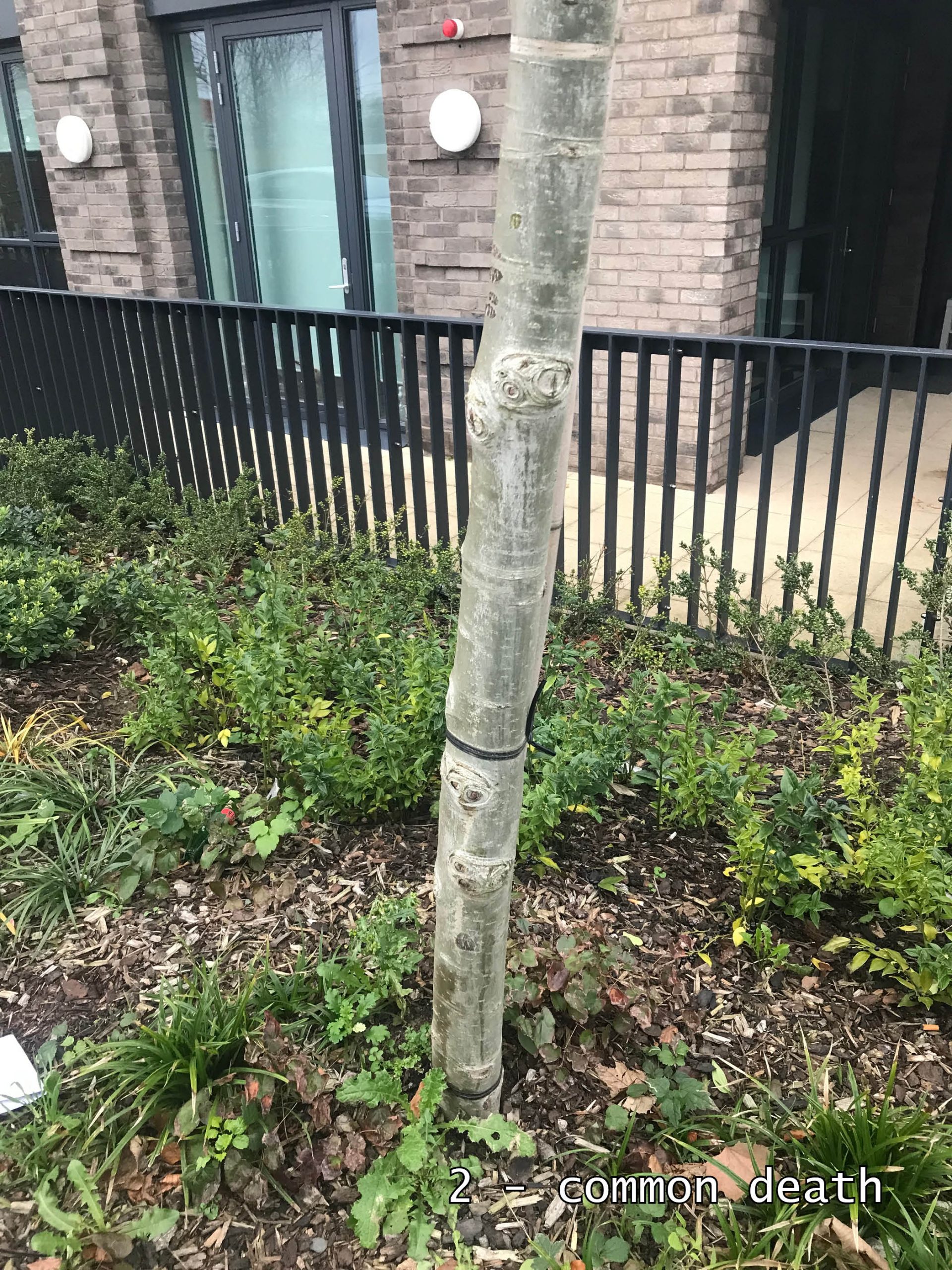
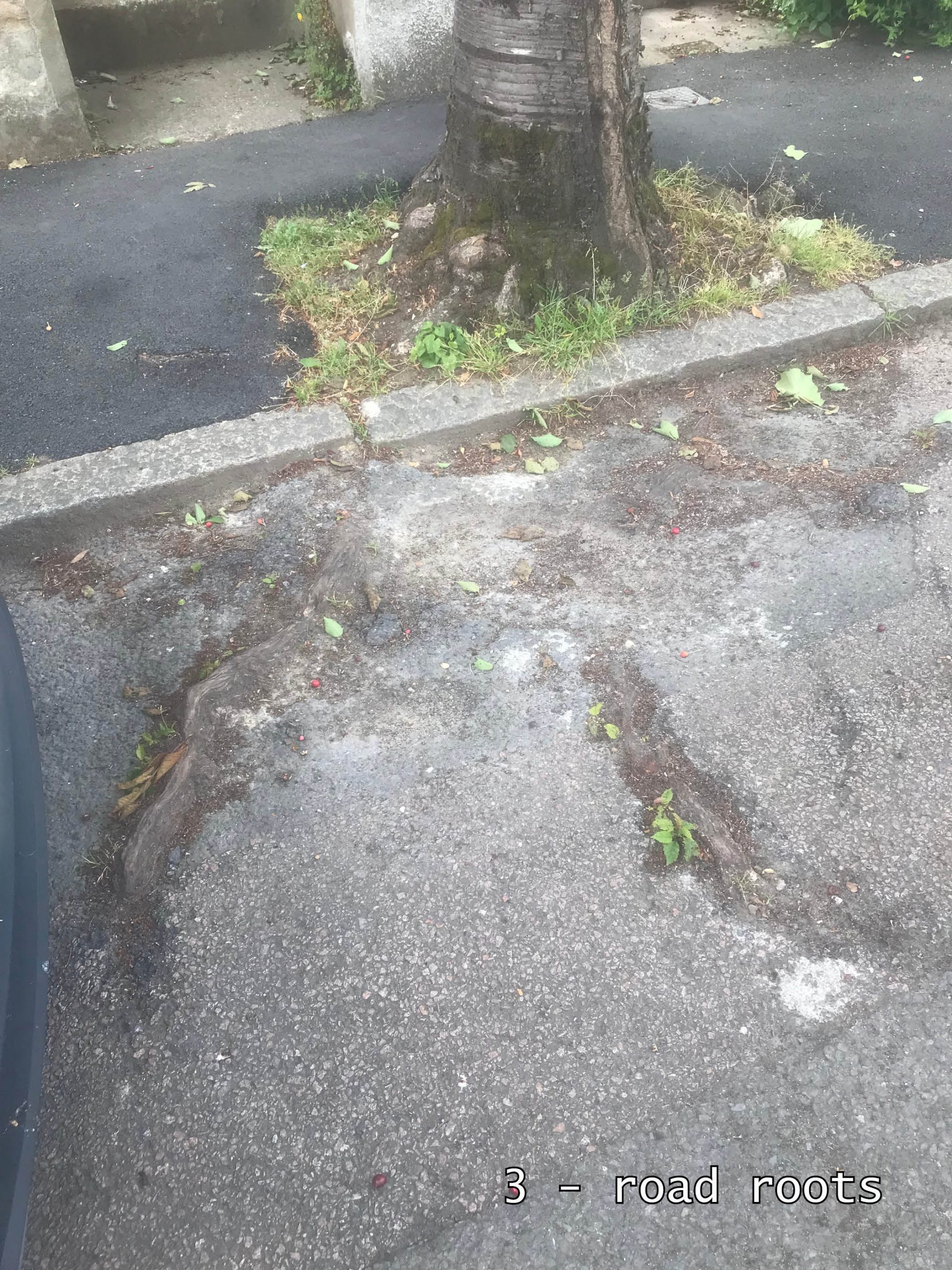


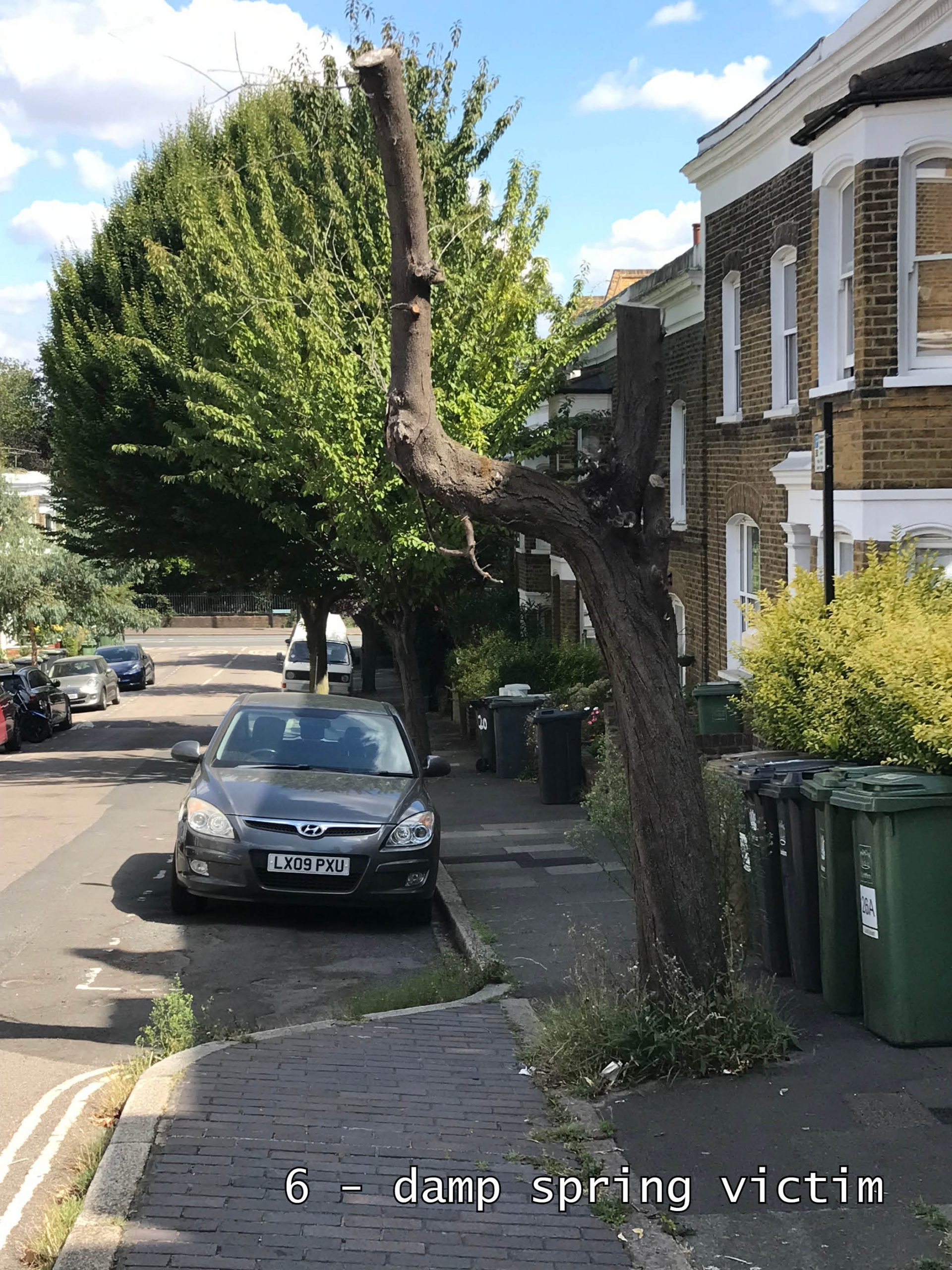
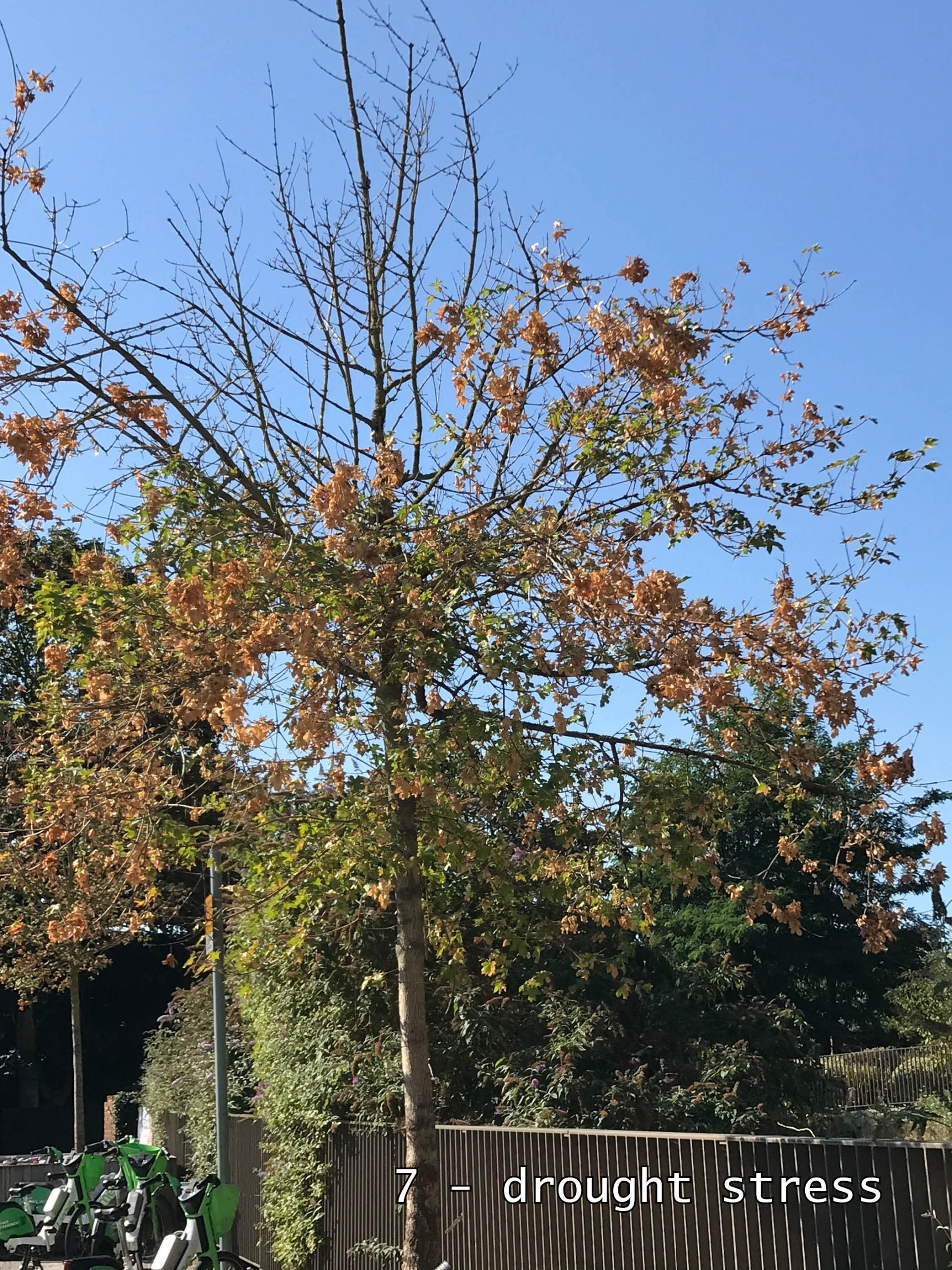
Many street repairs are not carried out with like for like materials but lashed up with black-top. This is not only a problem for water run-off but prevents water getting to the tree roots [photo 3]. It also prevents air, which tree roots also need. With no proper edging to tree pits, the tarmac encroaches and leaves the tree prone to fungus, which can kill it [photo 4]. It is not the case that every tree in a confined pit will die, but it is extra stress and a lot of St John’s trees have fungus [photo 5]. There are many causes of stress. Last year’s very damp, grey spring was very bad for all the red-leaved trees [photo 6] and this year’s drought causes water stress [photo 7].
Trees can also be removed under legal threat even when healthy. They have no rights unlike the owner of a property, whose foundations seem to be under threat [photos 8-9]. If pollarded, a tree can keep a smaller root spread and not threaten the house. However, there is no obligation to pollard to protect both tree and house. So the tree loses. Properly carried out pollarding also extends the life of a tree by keeping as much growth as possible young. Sadly pollarding seems to be against Borough policy. A further advantage of a pollarding policy is that it gives confidence to property owners, especially if given information, that the tree will not hurt their house with a controlled root spread. It seems that there are people who are prepared to deliberately damage trees [photos 10-11]. This incentive should be removed.
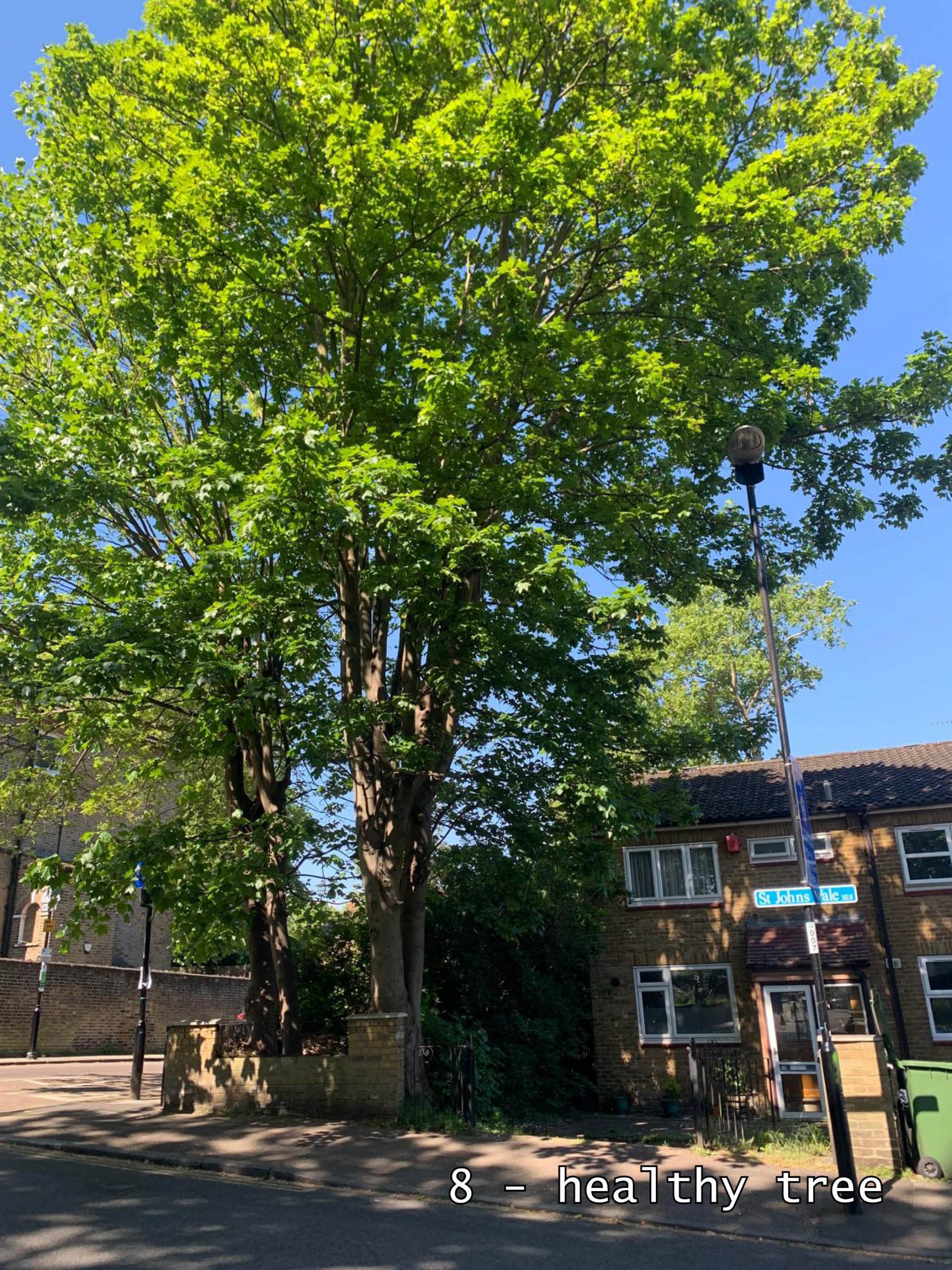
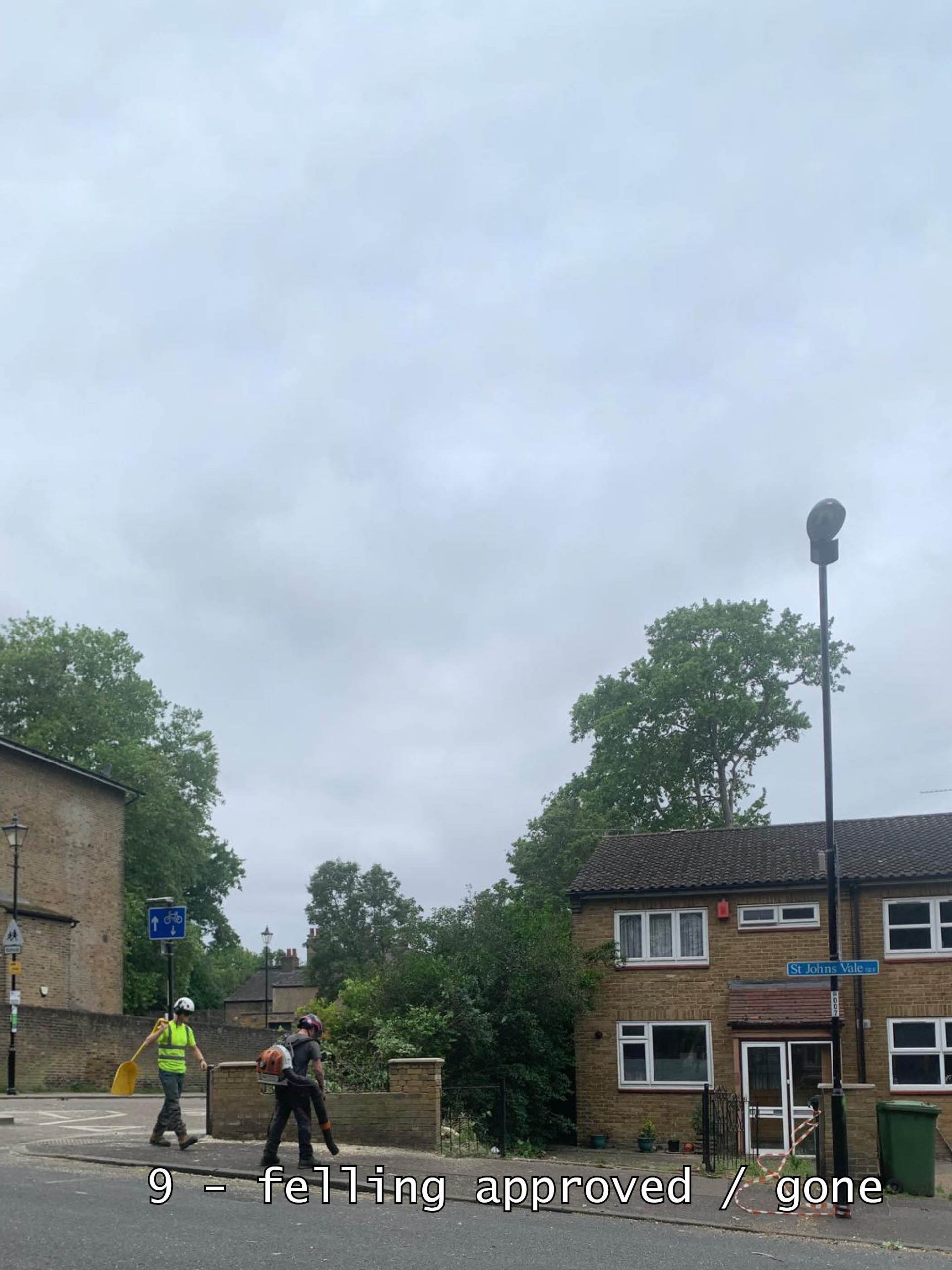

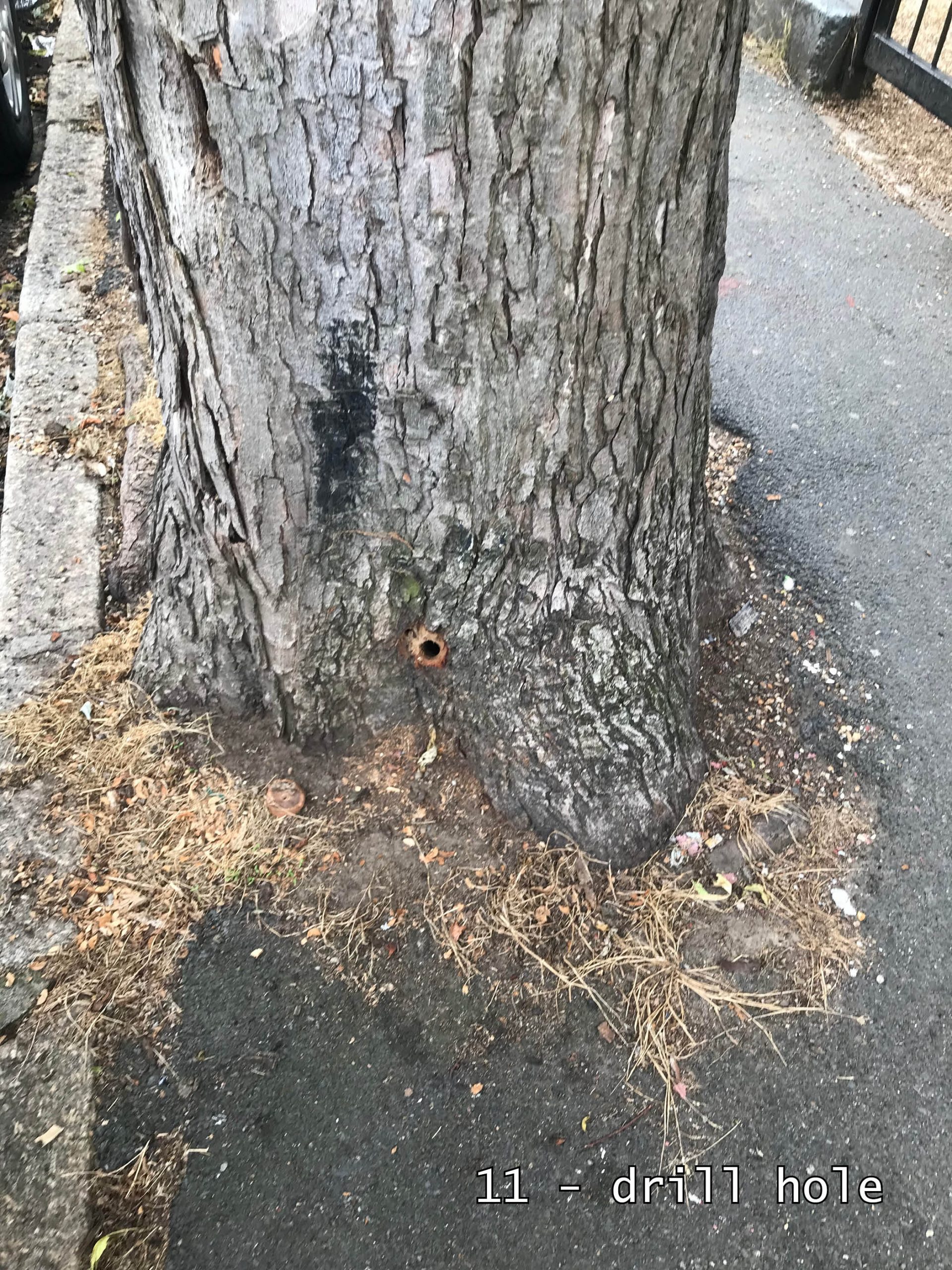
Sometimes it seems that statutory notices are more important than trees [photo 12]. I reported this one but not in time.
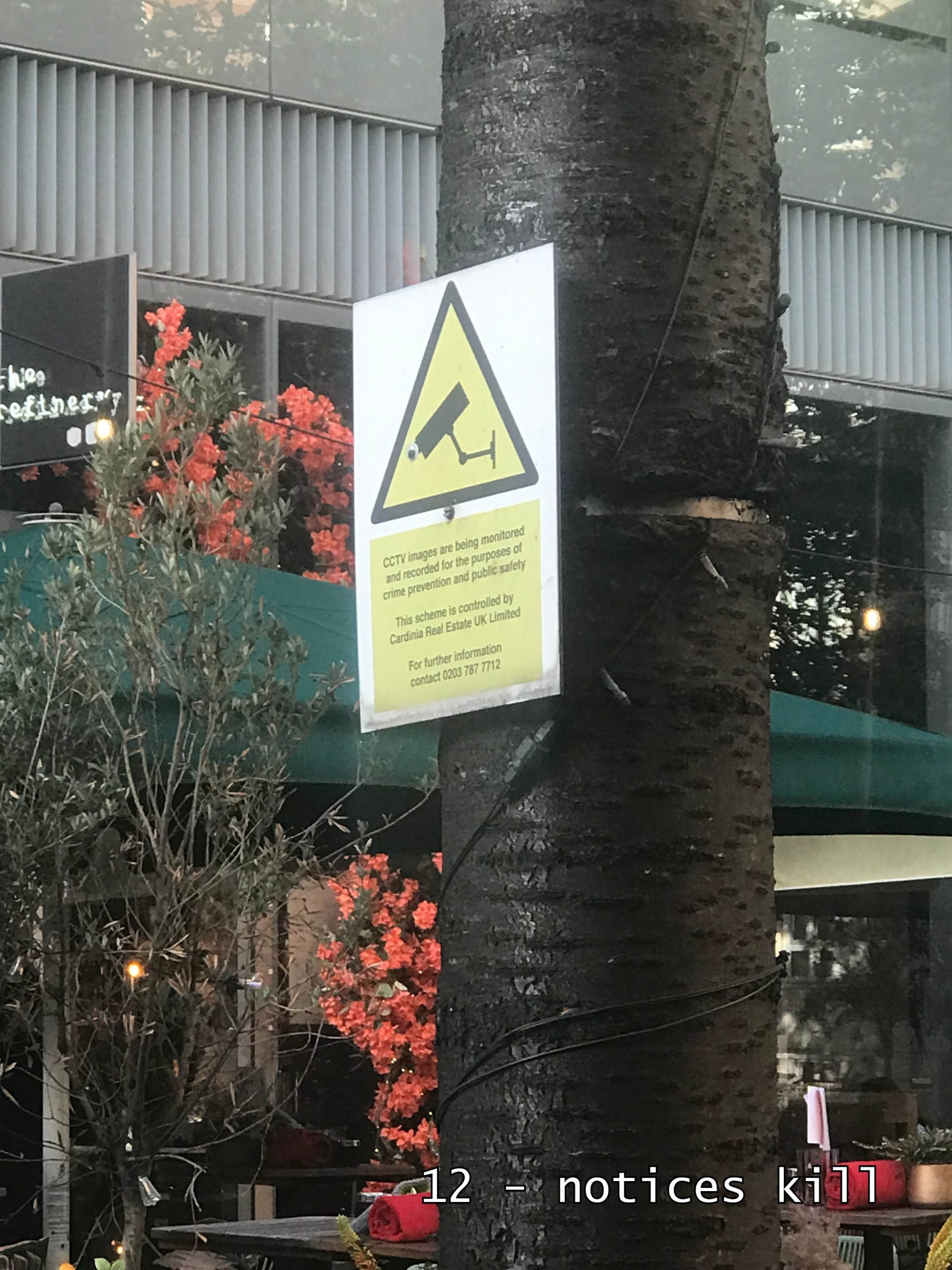
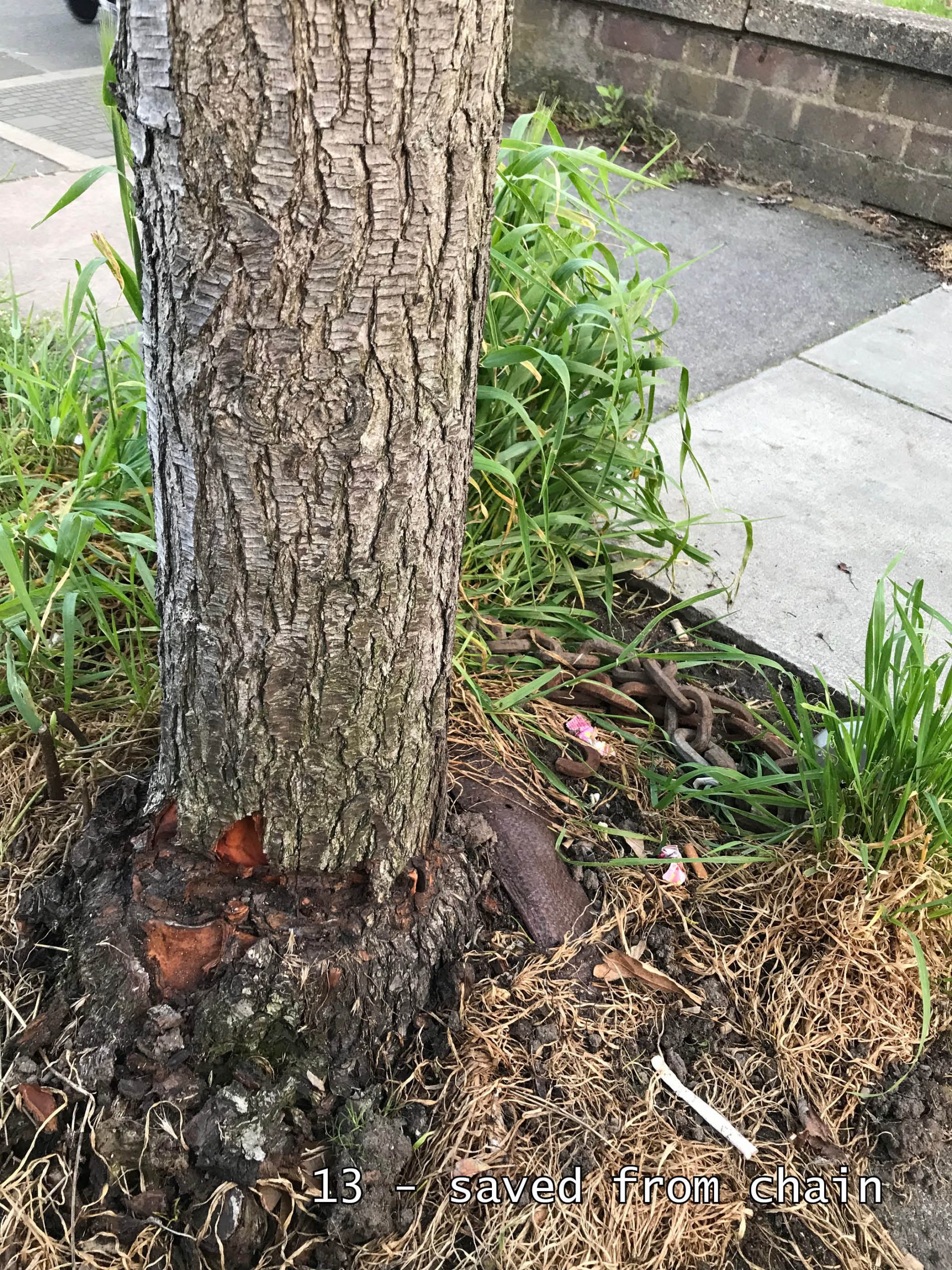
Part of keeping our streets healthy must be to review finishes around trees and make necessary repairs. Street trees should be pollarded. Property owners should be obliged to pollard their trees. Then if they apply to have them felled and there is no history of pollarding, permission can be refused on the grounds that they did not do what they could to protect their property.
It is good to end on a positive note. This tree has survived thanks to somebody removing a heavy chain that was tightening around its trunk [photo 13]. We have the tools to protect trees properly and we should use them.

